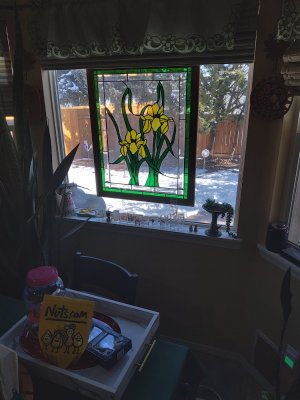- Joined
- Apr 3, 2023
- Messages
- 232
- Points
- 113

I'll add my two cents worth (okay, now a nickel's worth, since we finally got rid of pennies)...
It's somewhat related, in that from my experience it does seem adhesive backed products will adhere a long time... IF, and that's a big IF... the adhesive is decent and the surface to which they're applied it properly prepared. By that I mean clean, dust and oil free. Smoother is better than rough.
What I base this on is some scale cannon kits I purchased from Model Expo nearly forty years ago. Each was built on a small wooden platform base, and the name of the cannon was applied to the facing edge of that base. The name was printed on a metal tape, which appears to be glossy gold/bronze in colour. I just checked all six of them as they're sitting on a shelf in my study right behind me as I typed this. I've checked all three and the adhesive backed metal tape is still secure on each of the six. No curling edges. No lifting. All I can say is that he wood was sanded smooth, and sealed with a Floquil product before the strips were applied.
I too have been haunted by this same concern regarding the Chinese embossed copper tape product. When I completed by center mast cross sections for the Victory and Constitution, I originally painted the hull with a copper enamel paint. Many, many years later, I came across the copper tape product and purchased eight rolls of the stuff... enough to do the two cross sections, and the hull of the Corel Victory of the same scale as the cross section. So I worry about how well the tape will bond to the hull, and how to ensure I don't leave a boatload (pun intended) of fingerprints on the copper for CSI techs to discover. I still don't know for certain how I'll deal with the latter issue, aside from perhaps putting on a clear sealant coat of some sort. But for the copper strips adhering in the long run, what I've decided is that if they do start to come off, that means the glue will have dried out and deteriorated. My thinking is that a light sanding, cleaning, and application of a wood sealant finish will deal with it. IF I have to deal with it.
It's somewhat related, in that from my experience it does seem adhesive backed products will adhere a long time... IF, and that's a big IF... the adhesive is decent and the surface to which they're applied it properly prepared. By that I mean clean, dust and oil free. Smoother is better than rough.
What I base this on is some scale cannon kits I purchased from Model Expo nearly forty years ago. Each was built on a small wooden platform base, and the name of the cannon was applied to the facing edge of that base. The name was printed on a metal tape, which appears to be glossy gold/bronze in colour. I just checked all six of them as they're sitting on a shelf in my study right behind me as I typed this. I've checked all three and the adhesive backed metal tape is still secure on each of the six. No curling edges. No lifting. All I can say is that he wood was sanded smooth, and sealed with a Floquil product before the strips were applied.
I too have been haunted by this same concern regarding the Chinese embossed copper tape product. When I completed by center mast cross sections for the Victory and Constitution, I originally painted the hull with a copper enamel paint. Many, many years later, I came across the copper tape product and purchased eight rolls of the stuff... enough to do the two cross sections, and the hull of the Corel Victory of the same scale as the cross section. So I worry about how well the tape will bond to the hull, and how to ensure I don't leave a boatload (pun intended) of fingerprints on the copper for CSI techs to discover. I still don't know for certain how I'll deal with the latter issue, aside from perhaps putting on a clear sealant coat of some sort. But for the copper strips adhering in the long run, what I've decided is that if they do start to come off, that means the glue will have dried out and deteriorated. My thinking is that a light sanding, cleaning, and application of a wood sealant finish will deal with it. IF I have to deal with it.




 .
.



